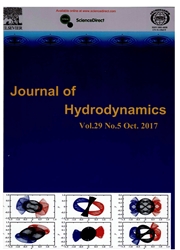

 中文摘要:
中文摘要:
The cochlea is an important structure in the hearing system of humanity. Its unique structure enables the sensibility to the sound waves of varied frequencies. The widely accepted model of the cochlea is expressed as a long tube longitudinally divided by a membrane named the Basilar Membrane (BM), into two fluid-filled channels. Based on various assumptions for the cochlear fluid and structure, simplified mathematical and mechanical cochlear models were developed to help to understand the mechanism of the complex coupled system in the past decades. This paper proposes a hydrodynamic numerical cochlear model with consideration of the Fluid-Structure Interaction (FSI). In this model, the cochlear lymph is considered as in a Newtonian viscous fluid, and the basilar membrane is modeled as a composite structure. The traveling wave is simulated. Also focusing on the pressure in the fluid field, the results are compared with studies of Peterson and Bogert, where it was assumed that the slow compressive waves are traveling along the BM. Furthermore, the transmitting time of the cochlear traveling wave is also discussed.
 英文摘要:
英文摘要:
The cochlea is an important structure in the hearing system of humanity. Its unique structure enables the sensibility to the sound waves of varied frequencies. The widely accepted model of the cochlea is expressed as a long tube longitudinally divided by a membrane named the Basilar Membrane (BM), into two fluid-filled channels. Based on various assumptions for the cochlear fluid and structure, simplified mathematical and mechanical cochlear models were developed to help to understand the mechanism of the complex coupled system in the past decades. This paper proposes a hydrodynamic numerical cochlear model with consideration of the Fluid-Structure Interaction (FSI). In this model, the cochlear lymph is considered as in a Newtonian viscous fluid, and the basilar membrane is modeled as a composite structure. The traveling wave is simulated. Also focusing on the pressure in the fluid field, the results are compared with studies of Peterson and Bogert, where it was assumed that the slow compressive waves are traveling along the BM. Furthermore, the transmitting time of the cochlear traveling wave is also discussed.
 同期刊论文项目
同期刊论文项目
 同项目期刊论文
同项目期刊论文
 期刊信息
期刊信息
